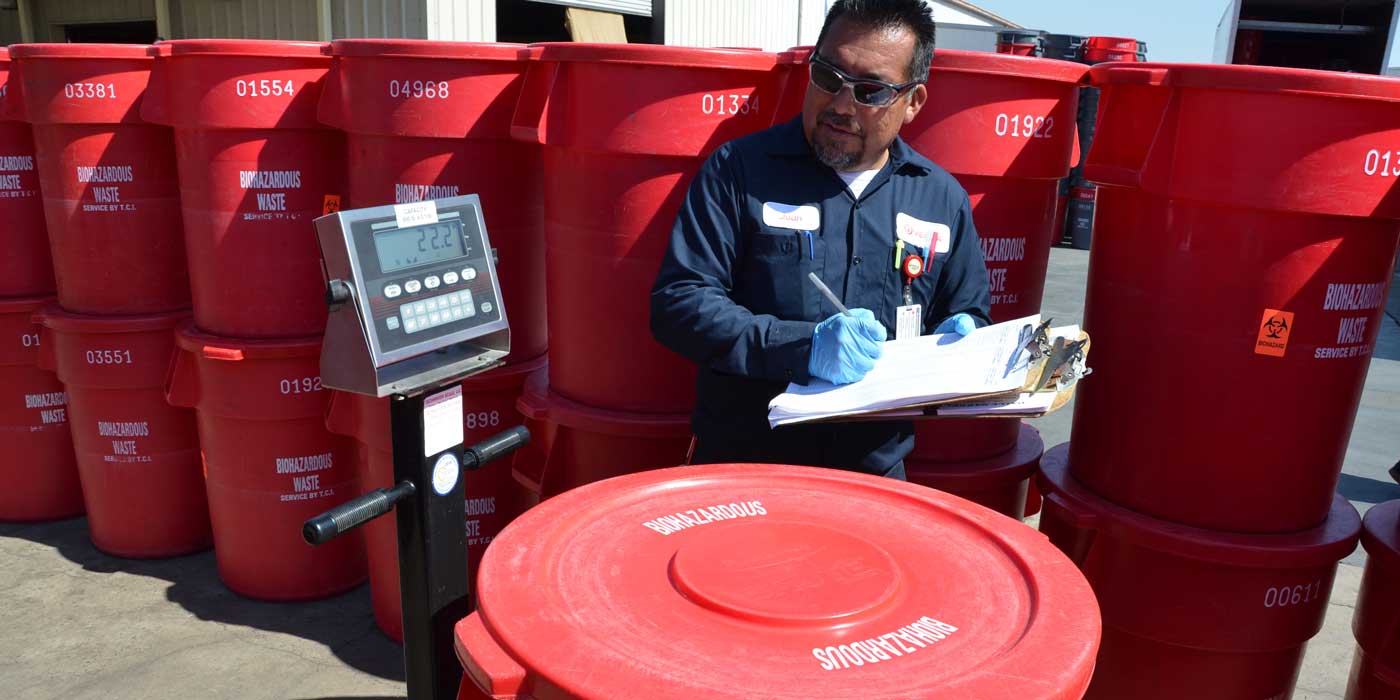Medical Waste Removal Quality: Your Trusted Companion in Safe Biohazard Disposal
Medical Waste Removal Quality: Your Trusted Companion in Safe Biohazard Disposal
Blog Article
Comprehending the Different Kinds Of Waste Disposal Strategies
In the world of waste administration, the selection of disposal strategies readily available today is huge and differed, each approach serving a distinct purpose in addressing the difficulty of garbage disposal. click here. From reusing techniques that intend to give new life to products, to the intricate procedures of contaminated materials management, the landscape of waste disposal is complicated yet critical for ecological sustainability. Understanding the subtleties of these various techniques not just clarifies the significance of liable waste monitoring however likewise motivates us to reassess our strategy in the direction of waste disposal in a rapidly evolving world

Recycling Approaches
Recycling techniques are vital for sustainable waste management practices in both residential and industrial settings. medical waste disposal. By executing effective recycling methods, a substantial amount of waste can be drawn away from land fills, preserving natural deposits and reducing the environmental impact of production processes
In residential areas, curbside recycling programs play an important duty in encouraging houses to separate recyclable materials from general waste. Materials such as paper, plastics, glass, and steels can be arranged and accumulated for handling into brand-new products, lowering the demand for raw products and energy-intensive manufacturing processes.
Industrial facilities additionally count on recycling approaches to minimize waste generation and promote a round economic situation. By applying closed-loop systems, businesses can recycle materials within their production processes, reducing costs and ecological footprint. medical waste removal near me. In addition, industrial recycling programs typically involve partnerships with specialized reusing centers to make certain that products are appropriately sorted, refined, and rehabilitated right into the supply chain
Composting Strategies

Aerated fixed heap composting includes mixing organic waste materials in a huge pile and frequently turning it to ensure proper oygenation. This approach is reliable for large composting procedures. On the other hand, vermicomposting utilizes earthworms to damage down raw material right into nutrient-rich spreadings. This method is appropriate for smaller-scale operations and houses.
In-vessel composting involves positioning organic waste in a closed container with controlled problems for temperature level and oygenation. Windrow composting includes developing long rows of organic waste and regularly turning them to advertise decay - medical waste removal.
Landfill Disposal
Land fill disposal is a commonly used approach for taking care of waste that can not be recycled or composted. It involves hiding waste in assigned areas of land, with appropriate preventative measures to avoid environmental contamination. Landfills are engineered facilities created to isolate waste from the surrounding environment. The waste is compacted and covered with soil daily to decrease odors, deter bugs, and lessen the spread of trash. Modern garbage dumps are geared up with safety linings and monitoring systems to avoid leak of damaging compounds right into the dirt and groundwater. Methane gas, a by-product of decaying natural waste in land fills, is often gathered and utilized as a resource of renewable resource. Despite developments in garbage dump technology, worries remain concerning the long-term environmental impacts, such as groundwater contamination and greenhouse gas discharges. Efforts to lower dependence on land fills consist of promoting waste decrease, reusing, and checking out alternative waste disposal techniques to minimize the ecological impact connected with conventional land fill disposal techniques.

Waste-to-Energy Incineration
Incineration of waste for energy generation is a technique increasingly being taken into consideration as an alternative to traditional landfill disposal techniques. Waste-to-energy incineration entails the burning of waste materials at high temperature levels, usually in specialized centers created to generate electrical power or heat through the procedure - click here. This method not just minimizes the volume of waste that would certainly otherwise be predestined for garbage dumps but additionally harnesses the heat generated throughout incineration to create energy
One of the crucial benefits of waste-to-energy incineration is its ability to create electrical energy while minimizing the ecological impact compared to traditional landfill disposal methods. By converting waste right into energy, this strategy aids in minimizing greenhouse gas discharges and reliance on nonrenewable fuel sources for power generation. In addition, waste-to-energy centers are geared up with sophisticated air pollution control innovations to mitigate possible ecological toxins released throughout the burning procedure.
Contaminated Materials Management

Thinking about the critical value of liable waste monitoring methods, particularly in the world of environmental sustainability, the focus currently changes towards the complex domain name of Contaminated materials Administration. Harmful waste poses substantial risks to both human health and wellness and the environment, requiring customized handling and disposal techniques. Usual examples of unsafe waste include chemicals, batteries, pesticides, and digital waste.
Contaminated materials Management entails the recognition, collection, transport, treatment, and disposal of products deemed harmful or possibly hazardous. This process needs adherence to strict laws and standards to alleviate damaging influence on communities and public wellness. Numerous techniques are utilized in taking care of harmful waste, including recycling, safe and secure land fills, encapsulation, and chemical treatment.
Proper Harmful Waste Administration is important for protecting against contamination of soil, water resources, and air contamination. It is necessary click here now for markets, research laboratories, health care centers, and various other generators of unsafe waste to implement durable management methods, training programs, and emergency feedback prepares to make certain the secure handling and disposal of these materials. Failure to handle contaminated materials suitably can have far-ranging consequences, emphasizing the value of attentive and responsible practices in this field.
Verdict
In verdict, waste disposal strategies play a critical role in handling and decreasing the influence of waste on the setting. It is important for individuals and sectors to comprehend the various waste disposal techniques readily available and choose the most suitable technique for sustainable waste monitoring.
In the world of waste management, the selection of disposal methods readily available today is large and differed, each method offering an unique function in attending to the challenge of waste disposal. click here. From recycling approaches that intend to offer brand-new life to materials, to the detailed procedures of harmful waste administration, the landscape of waste disposal is intricate yet critical for environmental sustainability. Understanding the subtleties of these different strategies not only loses light on the relevance of accountable waste administration yet likewise motivates us to reassess our technique towards waste disposal in a rapidly evolving world
Efforts to minimize reliance on land fills include advertising waste reduction, recycling, and discovering alternative waste disposal techniques to minimize the environmental impact associated with typical land fill disposal techniques.
It is important for sectors and individuals to comprehend the different waste disposal methods offered and pick the most ideal approach for sustainable waste administration.
Report this page